'This is really quite dramatic': Cocaine is booming like never before
A massive surge in cocaine production has flooded markets around the world, according to the United Nations Office on Drugs and Crime (UNODC).
In their latest annual report, UN researchers noted that “estimated global illicit manufacture of cocaine reached an all-time high of 1,976 tons… in 2017, an increase of 25 per cent on the previous year.”
Last year, UNODC Executive Director Yury Fedotov said that “drug markets are expanding, with cocaine and opium production hitting absolute record highs, presenting multiple challenges on multiple fronts.” This year, that trend continued with cocaine while opium production declined.
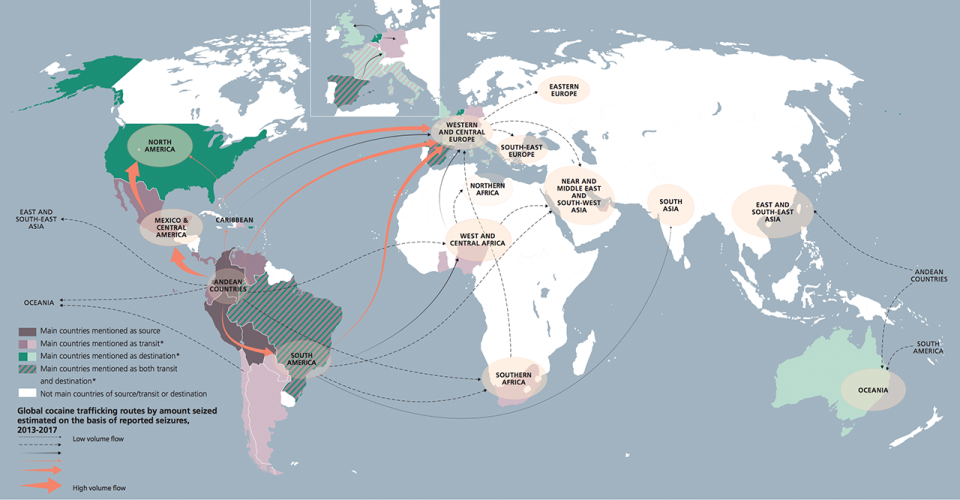
‘Cocaine production has been massively increasing’
The key reason for the boom is because Colombia saw a 17% expansion in the area used for coca bush cultivation year-over-year, which resulted in a 31% rise in the amount of cocaine produced. Colombia produces an estimated 70% of the world’s cocaine according to the UN.
“Cocaine production has been massively increasing, particularly in Colombia… it’s a significant boom,” Thomas Pietschmann, the World Drug Report’s research officer and lead author, told Yahoo Finance. “The overall level we have now, we have never seen before.”
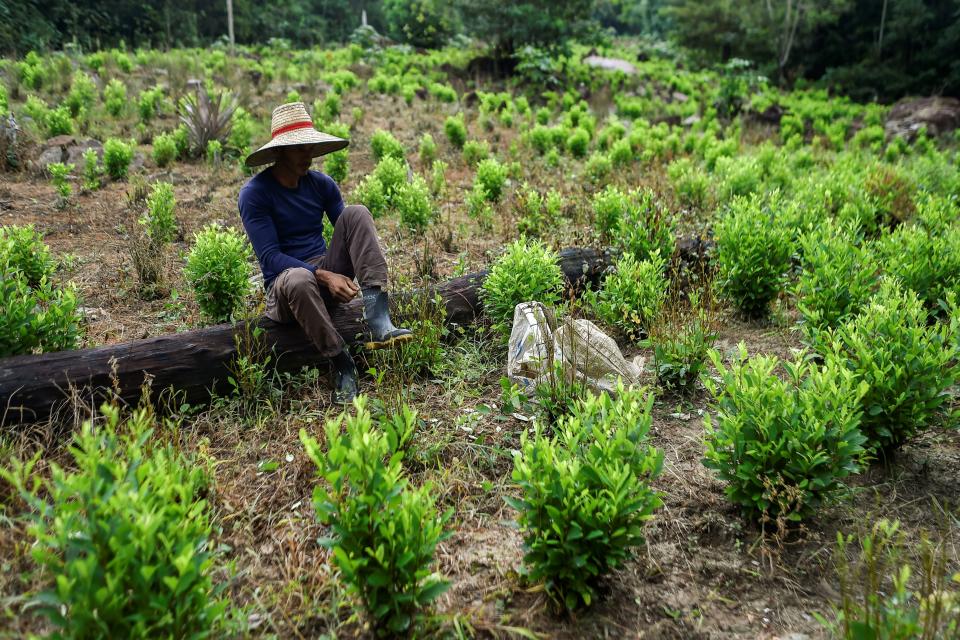
While the report is backward-looking, massive amounts of cocaine have been seized in the past few months — such as the historic bust of 30,000 pounds of cocaine in Philadelphia which were worth over $1 billion in street value earlier this month, and the 333 pounds seized in Baltimore worth $10 million — underscoring the fact that supply is trending upwards.
And along with the supply boom, “we see a massive increase of cocaine consumption in North America… in Europe, and also in other parts of the world,” added Pietschmann. “It’s really becoming — in this case — a phenomenon.”
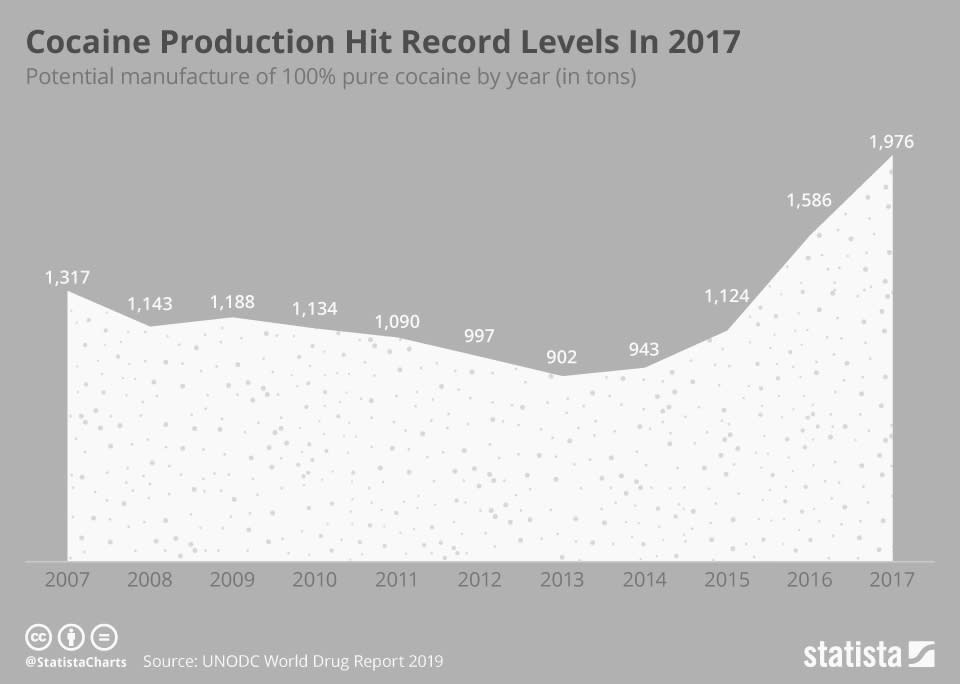
‘This is really quite dramatic’
Based on Europe wastewater analysis — one method experts use to monitor the quantity of illicit drugs used in a community — experts reported that “from 2011 to 2018, we’ve seen an increase in cocaine consumption... of 56%,” Pietschmann said. “This is really quite dramatic. And this is a conservative estimate.”
The report estimated that 18.1 million people used cocaine in the past year globally, with the highest rates reported in North America and Australia/New Zealand.
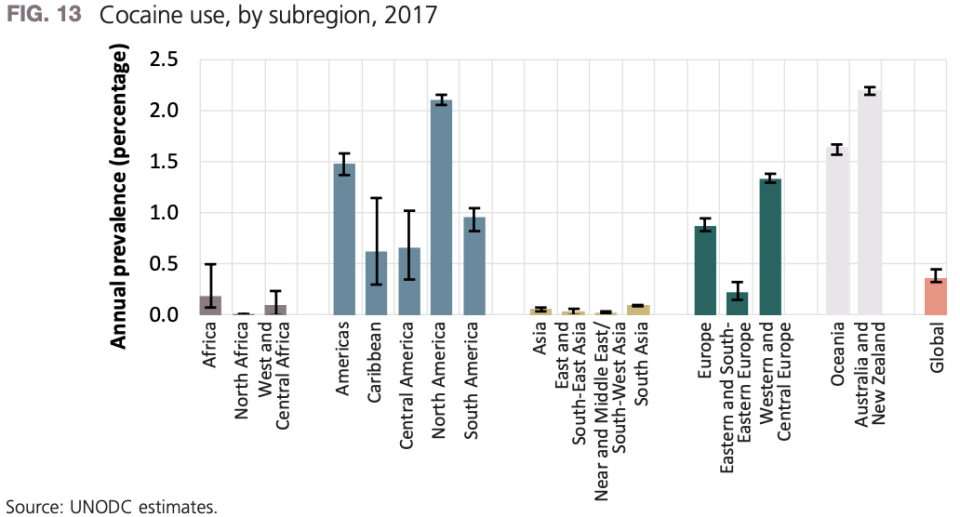
In the United States, in 2017, 2.2% of the population aged 12 and older had used cocaine in the past year, according to the report. Usage was the highest in the West (2.5%).
Young adults aged 18 to 25 were the biggest demographic that used cocaine, with 6.2% of the age group reporting recent use.
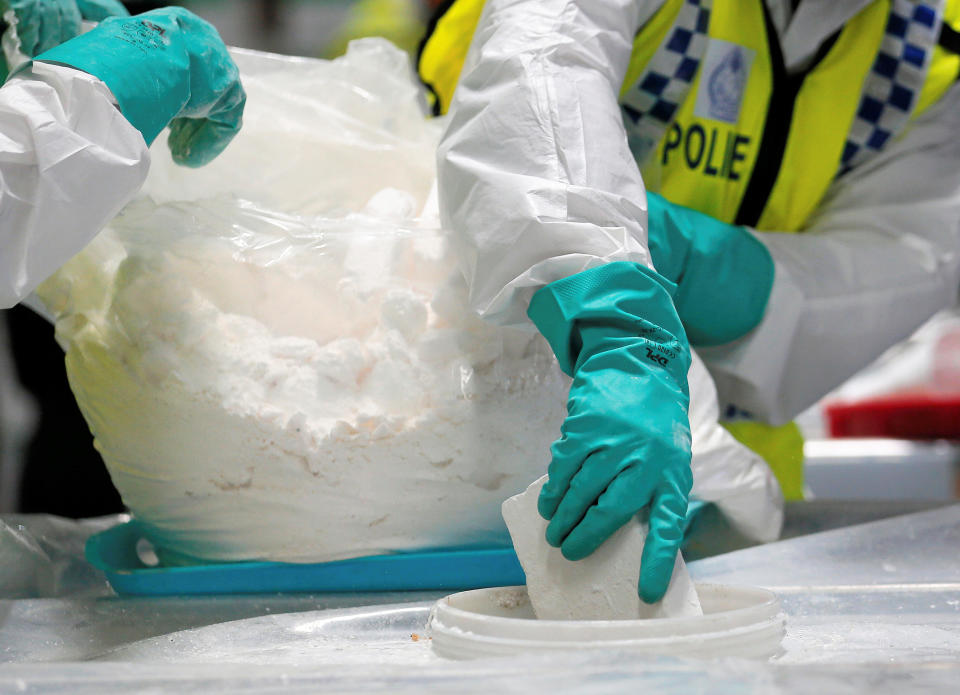
Consumption was still rising because of “increasing availability of cheaper and purer cocaine than ever,” the report added.
Pietschmann noted that the trends in North America and Europe matched “both in terms of numbers of users, and even more dramatic in terms of people dying from cocaine.”
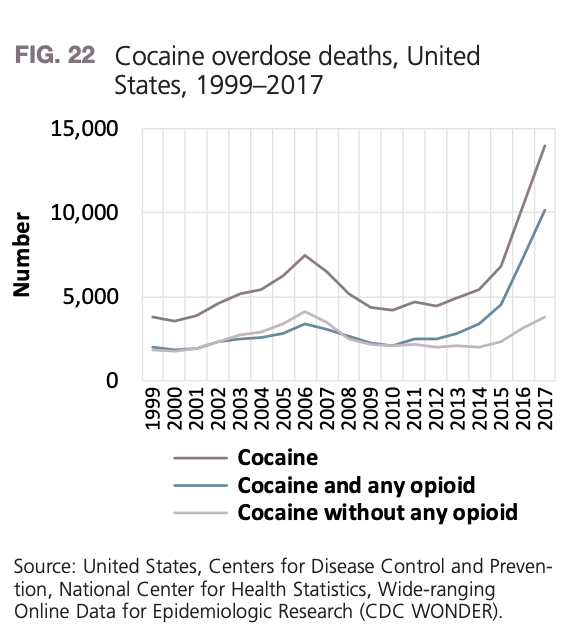
All roads lead to Colombia
Most of the world’s cocaine originates from Colombia and to a lesser extent Peru, and heads to the “main consumer markets” which are North America and Western and Central Europe, the report explained. An estimated 93% of cocaine that ends up in the U.S. originated in Colombia.
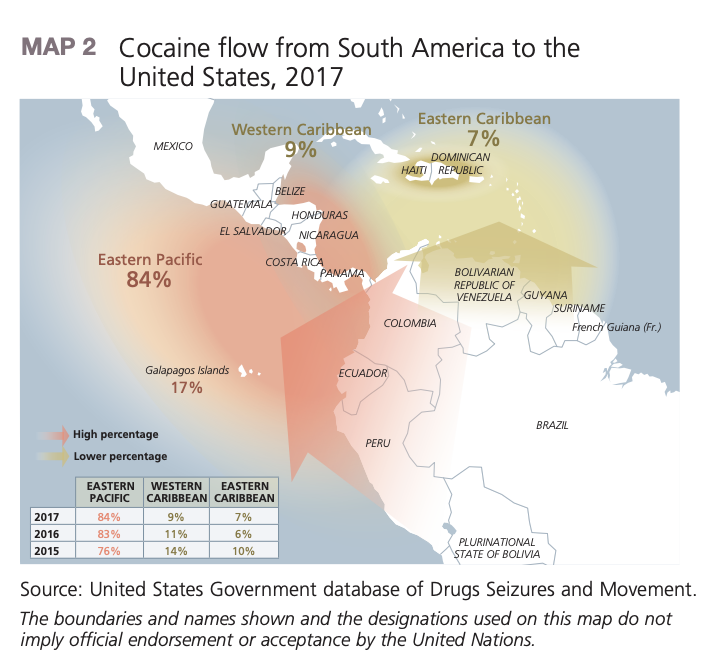
According to American authorities, the cocaine that’s shipped into the U.S. comes through Mexico, having transited through countries like Colombia, Ecuador and Guatemala.
And while the U.S. has traditionally been an “end market” for cocaine traffickers, Pietschmann said, traffickers are increasingly using the U.S. as a jumping off point for even more far-flung markets.
“You are seeing drugs being transported from South America, through Mexico, to the United States, to Canada,” explained Pietschmann. “From there they go to Australia.”
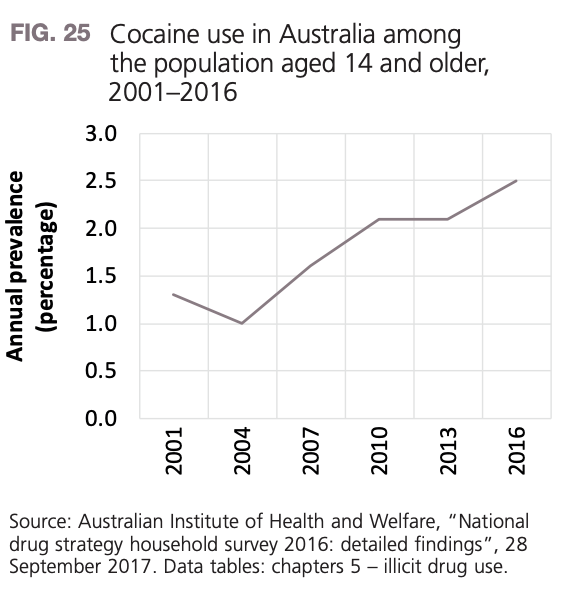
‘Sydney is the cocaine capital of Australia’
A big boost in cocaine supply and consumption Down Under has authorities worried.
According to a recent report by the Guardian, hundreds of kilograms of drugs have appeared on remote Pacific beaches and eventually making its way to Australia and New Zealand.
"In [the New South Wales] we have a major problem with the abuse of psychostimulants and the principle psychostimulants are cocaine and amphetamines,” crime statistician Don Weatherburn told the Sydney Morning Herald. “There is no doubt Sydney is the cocaine capital of Australia.”
He added: "My worry is that most of the current users are still only using on weekends or once a month, but if we get a large number using weekly or daily then we are going to see increases in other crime."
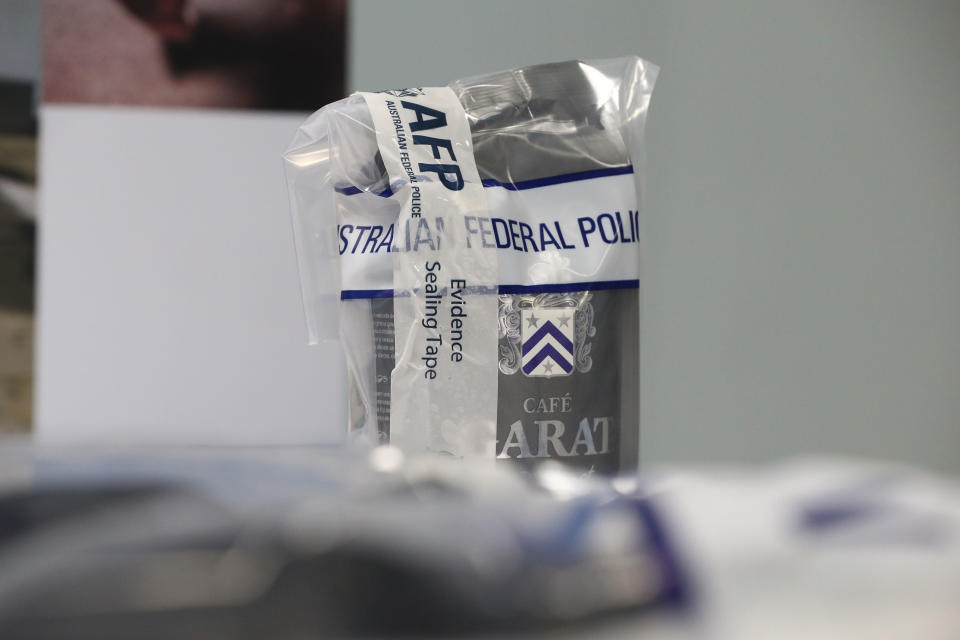
Australia as a market is highly profitable, the UNODC report found, with the estimated wholesale price of cocaine to be between $136,000 to $226,000 per kilogram between 2016 and 2018.
“Such high prices make the smuggling of cocaine profitable even from high-price transit countries such as the United States, where cocaine wholesale prices ranged between $4,000 and $50,000 per kg in 2017,” the report stated.
The same amount of cocaine would only fetch $880 in Peru.
—
Aarthi is a writer for Yahoo Finance. Follow her on Twitter @aarthiswami.
Read more:
Juul exposed: How Big Vape took a page from Big Tobacco’s old ad playbook
The 'Cheap Date Index': Here's how much it costs to go out around the world
Read the latest financial and business news from Yahoo Finance
Follow Yahoo Finance on Twitter, Facebook, Instagram, Flipboard, SmartNews, LinkedIn, YouTube, and reddit.

 Yahoo Finance
Yahoo Finance 
